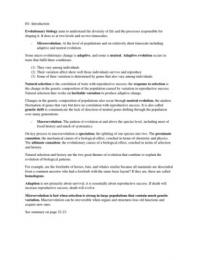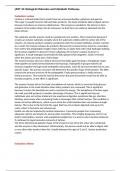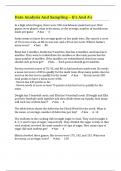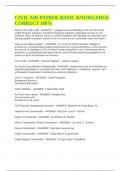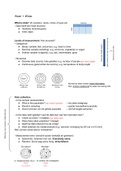Evolutionary biology aims to understand the diversity of life and the processes responsible for
shaping it. It does so at two levels and on two timescales;
- Microevolution; At the level of populations and on relatively short timescale including
adaptive and neutral evolution.
Some micro evolutionary change is adaptive, and some is neutral. Adaptive evolution occurs in
traits that fulfil three conditions:
(1) They vary among individuals
(2) Their variation affect show well those individuals survive and reproduce
(3) Some of their variation is determined by genes that also vary among individuals.
Natural selection is the correlation of traits with reproductive success; the response to selection is
the change in the genetic composition of the population caused by variation in reproductive success.
Natural selection thus works on heritable variation to produce adaptive change.
Changes in the genetic composition of populations also occur through neutral evolution, the aimless
fluctuation of genes that vary but have no correlation with reproductive success. It is also called
genetic drift to communicate the lack of direction of neutral genes drifting through the population
over many generations.
- Macroevolution; The pattern of evolution at and above the species level, including most of
fossil history and much of systematics.
On key process to macroevolution is speciation, the splitting of one species into two. The proximate
causation; the mechanical causes of a biological effect, couched in terms of chemistry and physics.
The ultimate causation; the evolutionary causes of a biological effect, couched in terms of selection
and history.
Natural selection and history are the two great themes of evolution that combine to explain the
evolution of biological patterns.
For example, are the forelimbs of horses, bats, and whales similar because all mammals are descended
from a common ancestor who had a forelimb with the same basic layout? If they are, there are called
homologous.
Adaption is not primarily about survival; it is essentially about reproductive success. If death will
increase reproductive success, death will evolve.
Microevolution is fast when selection is strong in large populations that contain much genetic
variation. Macroevolution can be irreversible when organs and structures lose old functions and
acquire new ones.
See summary on page 22-23.
, H2. Adaptive evolution
Adaptive evolution is driven by natural selection, and natural selection consequence of variation in
lifetime reproductive success. Selection occurs in material organisms; the response to selection is
recorded in information stored in the genes. Natural selection causes adaptive evolution in traits and
genes; neutral evolution causes non-adaptive change in traits and genes; and two conditions are
necessary for both adaptive and neutral evolution to occur;
1. Variation among individuals in lifetime reproductive success, in the number of their
offspring that survive to reproduce.
2. Heritable variation in the trait; that is, whether the state of the trait in the parent – at least
whether it is above or below average – is inherited by the offspring.
Thus two conditions and the link between them are the key elements of microevolution. The
conditions are heritable variation in traits and variation in lifetime reproductive success. The link is the
correlation between the two. The correlation between traits and reproductive success determines
whether evolution will be adaptive or neutral. The difference between adaptive and neutral
evolution lies in the correlation. When that correlation is positive or negative, natural selection is
operating on the trait, and evolutionary change will move the trait from generation to generation in the
direction of increasing adaption. When the correlation is zero, natural selection disappears, and then
the things that are inherited and that vary, whether genes or traits, fluctuate randomly in the population
(neutral).
One important ecological interaction occurs as population density increases and the amount of food
per individual decreases. Individuals then grow more slowly to become smaller adults, have fewer
offspring, and suffer higher mortality rates. However, due genetic variation some are better able to
cope with living at high density than others. Such ecological interactions (food supply, diseases,
predators) ensure that all natural populations contain individuals that vary in their reproductive
success. See page 30 for an example about large individual variation in reproductive success translates
into strong selection on any traits correlated with it.
To see if variation is heritable you can plot it (page 30). Selection is not just the survival of the
fittest; survival is important, but only insofar as it contributes to reproductive success, to the number
of offspring produced per lifetime that survive to reproduce.
Selection creates order out of disorder. Under strong selection populations rapidly produce
combinations of genes that are at first glance extremely unlikely. Natural selection doesn’t aim
anything. It just produces something that works better from among the variants currently available.
Remember the example on page 33 when you encounter the false argument that natural selection
cannot make precise, complicated organs like the vertebrate eye because it starts with random
variation. Natural selection can rapidly convert initially random variation into highly adapted
states. They only appear to be improbable because we have not watched the process at work. The
efficiency of natural selection makes even extremely precise and complicated structures probable
given enough time.
Whenever heritable variation in a trait is correlated with reproductive success, the trait changes from
one generation to the next, and the result is improved reproductive performance. As this improvement
continues, a process called adaption, it results in a condition in the trait that we also call an
adaptation.

